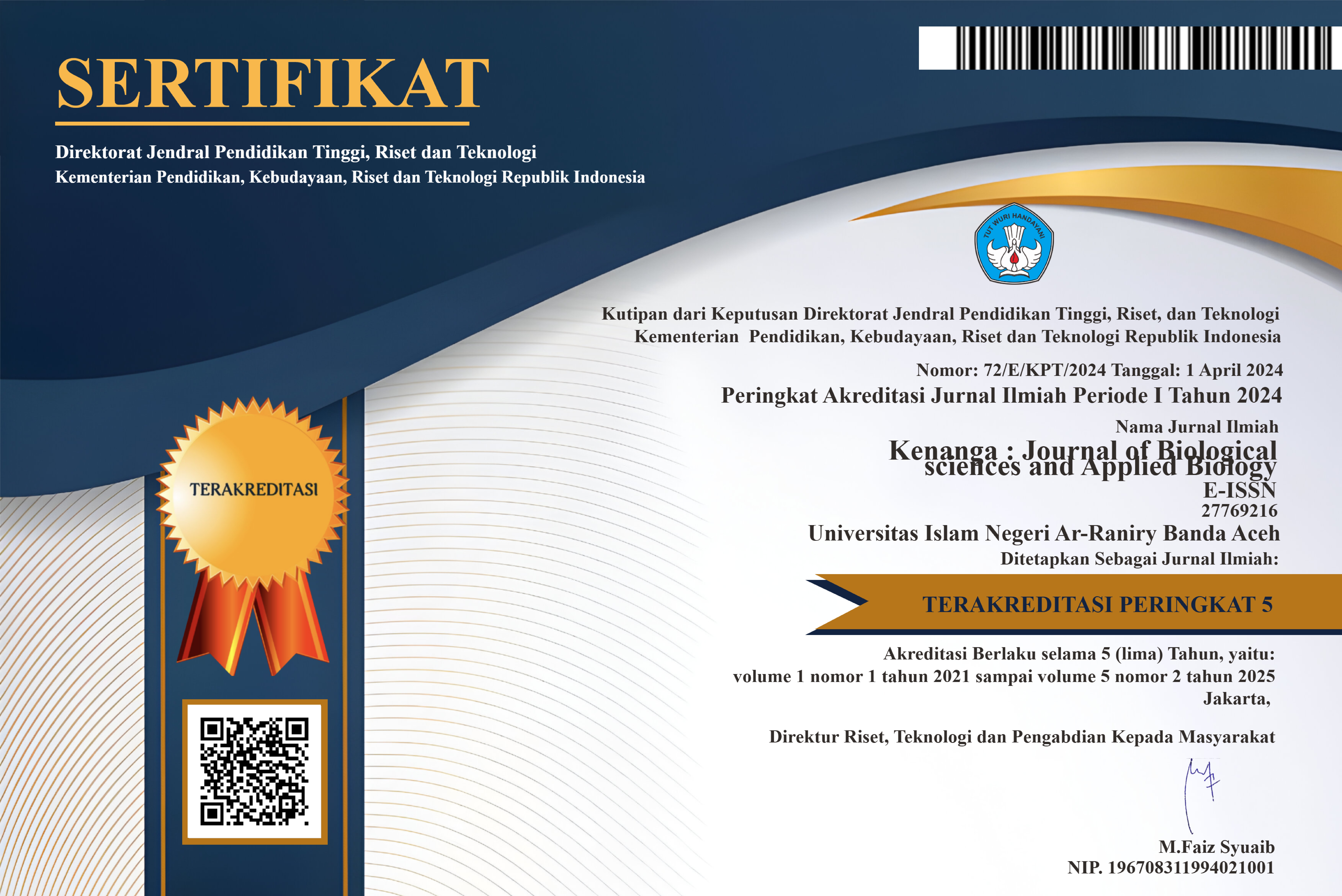KARAKTERISASI DAN UJI POTENSI JAMUR ENDOFIT PADA DAUN BAWANG MERAH (Allium ascalonicum L.) SEBAGAI PENGENDALI PATOGEN Fusarium sp. dan Alternaria sp.
DOI:
https://doi.org/10.22373/kenanga.v3i1.3120Keywords:
Endophytic Fungi, Pathogenic Fungi, Fusarium sp, Alternaria sp, Antagonist PotentialAbstract
Shallot (Allium ascalonicum L.) is a horticultural commodity that has high economic value and
is needed every day by the community. Attack by pets and pathogens on shallot cultivation
cause a decrease in crop productivity. The pathogen that often attacks shallot plants is Fusarium
sp. and Alternaria sp. This study aims to obtain endophytic fungi from shallot leaves that can
control Fusarium sp. and Alternaria sp. The endophytic fungus isolation method uses healthy
shallot leek samples while the pathogen isolation uses unhealthy leaves. The antagonism
potency test was conducted using the dual culture method with an incubation time of 7 days at
25-30oC. Based on the results of the study, there were 4 isolates of endophytic fungi on shallot
leaves, namely EA1 isolates (Aspergillus niger), EA2 isolates, EA3 isolates (Clasdoporium sp.)
and EA4 isolates (Phyllosticta sp.). The results of the antagonist test showed that the endophytic
fungus EA1 was able to inhibit the fungus Fusarium sp. and Alternaria sp. maximally (strong)
with an average value of Fusarium sp. of 62.72% while Alternaria sp. 67.83 %. The endophytic
fungus EA2 was also able to inhibit both of these pathogens but it was moderately categorized
with an average value of Fusarium sp. 52.11 % and Alternaria sp. 53.28%. The mechanisms of
inhibition are competition and hyperparasitism.























